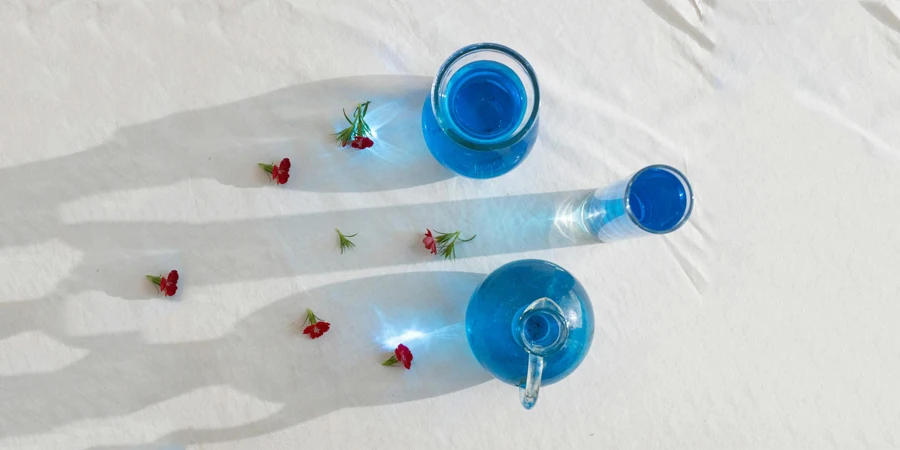Table of Contents
● Introduction
● Market overview
● Key technology and design innovations
● Top-selling models driving market trends
● Conclusion
Introduction
Glass and crystal vases not only epitomize elegance but also serve functional purposes in home and office decor. These vases, crafted from fine materials, elevate the visual appeal of any space, turning simple floral arrangements into striking centerpieces. The choice of vase can profoundly influence the presentation, enhancing both the flowers and the environment in which they are placed. Selecting the right vase involves considering both its form and its utility to ensure it complements the interior design seamlessly. Thus, investing time in choosing the perfect glass or crystal vase is essential for achieving the desired aesthetic impact and practical use.
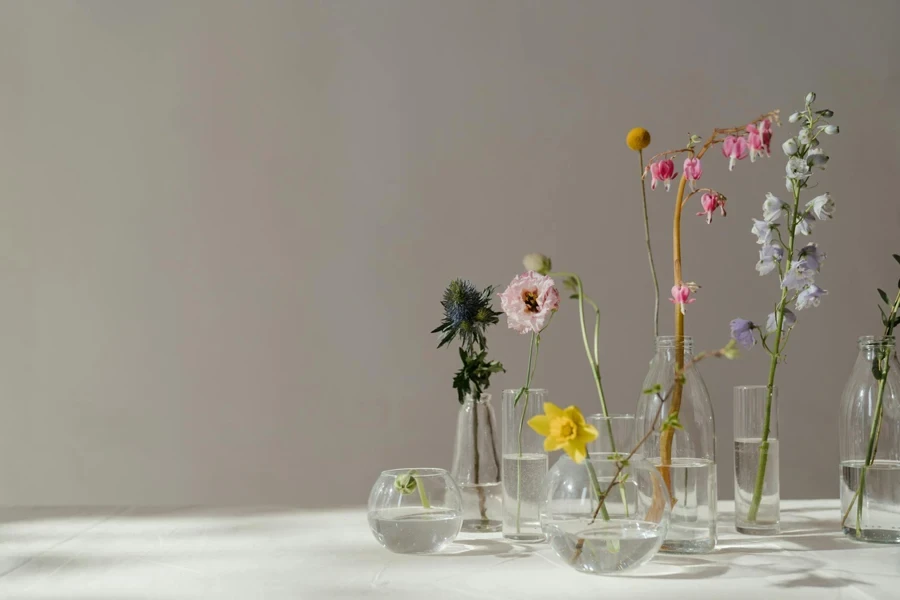
Market overview
The glass and crystal vase market is experiencing significant growth, attributed to an increasing demand for luxury home décor and a willingness among consumers to invest in high-end decorative items. According to Cognitive Market Research, the crystal glass segment, which prominently includes vases among other decorative articles, is expected to grow at a compound annual growth rate (CAGR) of 6.20% between 2023 and 2030. This uptick is driven by an expanding food service sector that requires aesthetically pleasing and high-quality products for luxury settings, alongside rising investments in innovative product designs that cater to evolving consumer tastes. As households increasingly favor items that enhance the aesthetics of their living spaces, the market is witnessing a surge in demand for products that not only serve a functional purpose but also act as a centerpiece for home décor. This is especially prominent among the middle and upper-middle-class demographics, whose growing disposable incomes enable them to allocate more resources towards beautifying their homes. Additionally, the global market dynamics are heavily influenced by technological advancements in glass manufacturing, which improve product durability and allow for more intricate designs, further fueling consumer interest and market expansion.
Moreover, the glass and crystal vase market is navigating through a transformative phase due to shifting consumer preferences towards sustainability and environmental consciousness. The traditional manufacturing processes, especially those involving the use of lead oxide, are under scrutiny due to their environmental impact, driving market players to seek eco-friendly and sustainable alternatives. These trends are compelling companies to innovate and adapt their offerings to meet both aesthetic desires and environmental standards. According to industry analysts, the market’s adaptation to these new standards is prompting an average increase of 15-20% in production costs, yet fostering a market growth rate that aligns with the increasing consumer demand for sustainable products. Market leaders and emerging players are thus investing in research and development to introduce products that align with these new consumer values, ensuring their market share and brand loyalty in a highly competitive environment. As a result, the market is not only growing in terms of value but also evolving in its approach to production and design, setting a new standard for quality and sustainability in the home décor industry.
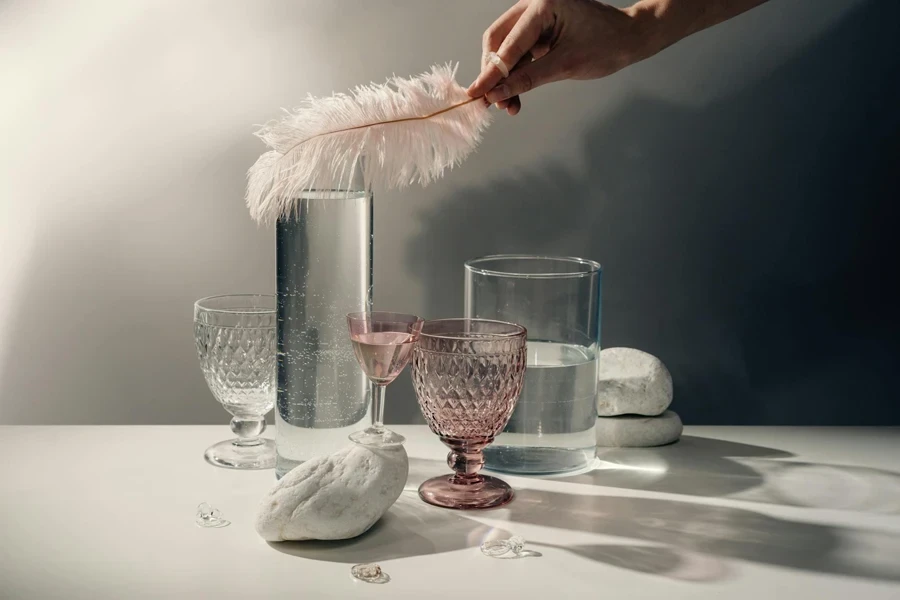
Key technology and design innovations
Advanced materials enhancing vase durability
The glass and crystal vase industry is rapidly evolving with the introduction of advanced materials that significantly enhance the durability and aesthetic appeal of vases. Reinforced glass composites, for instance, are now commonly used, offering a higher resistance to breakage while maintaining the pristine clarity and brilliance associated with traditional glass and crystal vases. These materials not only extend the lifespan of the products but also support intricate and delicate designs that were previously too fragile to execute. This innovation is a response to consumer demand for home décor items that combine lasting durability with elegant design, reflecting a deeper appreciation for quality and craftsmanship in the market.
Minimalism and color innovation in design
In line with current interior design trends, there is a significant shift toward minimalism in the glass and crystal vase industry. Minimalistic designs are being complemented by bold colors and innovative uses of textures, allowing these simple yet striking pieces to serve as focal points in any room. The trend towards using vibrant colors and varied textures helps break the monotony of traditional designs, giving modern homes a touch of sophistication that does not overwhelm the space. These design trends reflect the industry’s move towards products that are both functional and artistic, catering to the modern consumer’s need for style and simplicity.
Sustainability and eco-friendly practices
Sustainability is becoming increasingly influential in the design and manufacturing of glass and crystal vases. Manufacturers are now incorporating recycled glass materials into their production lines to reduce waste and decrease the environmental impact of their operations. This shift not only satisfies the growing market demand for eco-friendly products but also introduces new aesthetic possibilities in vase design. These environmentally conscious practices are not just about meeting regulatory standards but also about innovating the design process to include materials that are both sustainable and visually appealing.
The impact of recycled materials on new designs
The use of recycled materials is revolutionizing vase manufacturing by enabling the creation of eco-friendly products without compromising on quality or design. These materials are often sourced from post-consumer products, reducing the need for raw materials and minimizing the overall environmental footprint of the production process. The integration of recycled glass not only supports sustainability but also allows for the exploration of unique color variations and textures that are inherent to recycled materials. This approach is increasingly appreciated by consumers who value both environmental responsibility and unique design in their home décor choices.
Consumer demand driving innovation
The evolving preferences of consumers are driving significant changes in the glass and crystal vase market. As environmental awareness increases, so does the demand for products that align with sustainable living practices. This consumer trend is pushing manufacturers to explore innovative materials and techniques that meet these new standards without sacrificing the aesthetic and functional qualities of their products. The industry’s response to these demands is a testament to its adaptability and commitment to evolving with its consumer base, ensuring that the vases not only enhance home décor but also contribute positively to environmental sustainability.
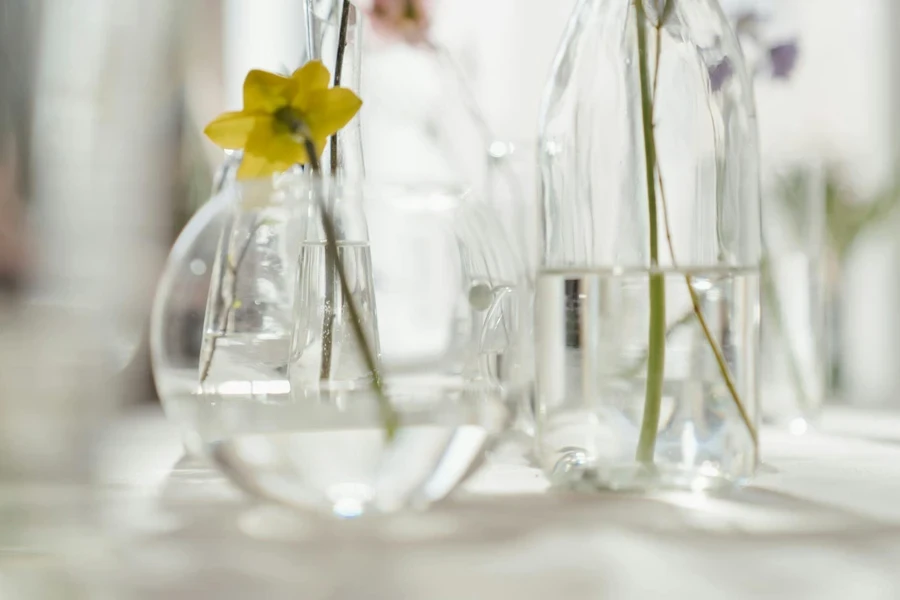
Top-selling models driving market trends
Popular vase models and consumer appeal
The current market showcases a variety of popular vase models that cater to diverse consumer tastes and interior design trends. Notably, minimalist designs paired with vibrant colors have become increasingly favored, as these vases offer a contemporary aesthetic that complements modern living spaces. Geometric shapes and transparent materials are particularly sought after, as they allow the natural beauty of the flowers to stand out, making them ideal for consumers looking to add a subtle yet stylish touch to their homes. Additionally, multifunctional vases that can be used both for displaying flowers and as standalone decorative pieces are seeing a rise in popularity, reflecting a shift towards versatile home decor products.
Case studies of successful vase designs
Examining successful vase designs reveals key trends that have captured market attention. The introduction of the eco-friendly recycled glass vase series has resonated well with environmentally conscious consumers. These vases not only promote sustainability but also feature unique textures and hues that differentiate them from traditional glassware. Another success story is the launch of the crystal bud vase collection, which has been praised for its intricate designs and exceptional clarity, catering to a luxury market segment that values craftsmanship and elegance in home decor.
Consumer preferences shaping vase design
Consumer preferences play a critical role in shaping the design of top-selling vases. There is a growing demand for customizability and personalization in vase designs. Consumers are increasingly looking for products that can be tailored to their specific style preferences or the thematic requirements of their living spaces. This trend has led manufacturers to offer a broader range of color options, finishes, and even customizable dimensions, which has been well-received by the market. Additionally, the preference for sustainable and ethically produced goods has steered vase manufacturers towards using eco-friendly materials and transparent production processes, further influencing design choices and manufacturing practices in the industry.
Impact of consumer trends on vase market
The vase market is dynamically influenced by evolving consumer trends, particularly the increasing importance of sustainability and personalization. These trends are not only shaping the types of materials used but also the marketing strategies of companies in the sector. As sustainability becomes a more significant selling point, vase manufacturers are compelled to innovate in both product design and materials to align with the ethical values of their target audience. This shift is creating a niche market for eco-friendly vases that feature both recycled materials and artisanal craftsmanship, appealing to a segment of consumers willing to invest in higher-priced items that promise durability, aesthetic value, and minimal environmental impact.
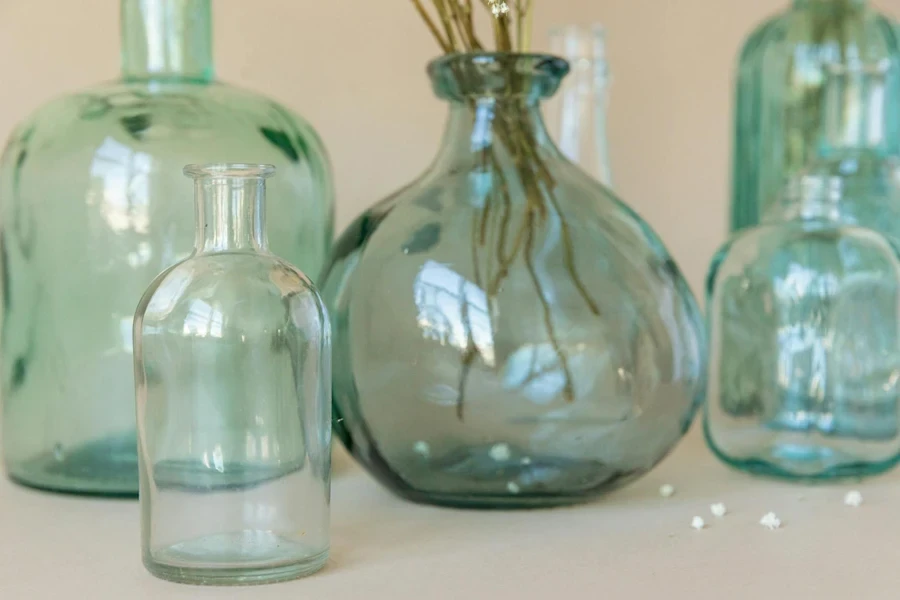
Conclusion
The exploration of advanced materials and sustainable practices, alongside the integration of consumer-driven design preferences, underscores a significant evolution in the glass and crystal vase market. As we have seen, reinforced glass and recycled materials are becoming staples in production, enhancing both the durability and environmental appeal of vases. Minimalist designs enriched with vibrant colors and textures continue to attract consumers, reflecting a broader trend towards versatility and aesthetic value in home décor. These shifts suggest a market that is becoming increasingly responsive to consumer preferences for sustainability and customization, likely propelling further innovations in eco-friendly materials and adaptive designs.
Looking forward, the vase market is poised to embrace more innovative technologies, such as 3D printing and automated glass molding, which could revolutionize production methods and expand design possibilities. Additionally, as consumer interest in personalization grows, we may see a rise in on-demand vase design services, where customers can specify everything from shape to material. This trend towards personalization and technological integration is expected to open new avenues for market growth, catering to a consumer base that values both uniqueness and sustainability in their purchasing choices. These developments will likely continue to shape the competitive landscape of the vase industry, driving brands to differentiate themselves through both innovation and responsiveness to consumer needs.
